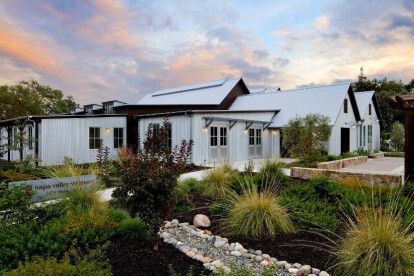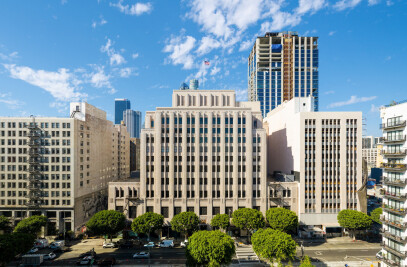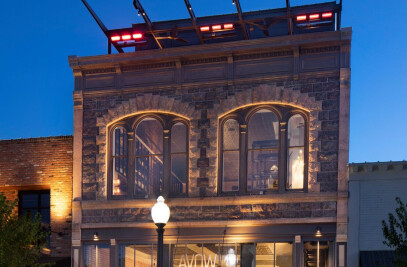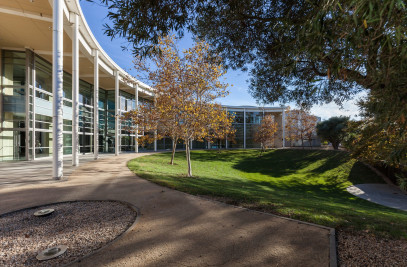The Jackse Winery, one of St. Helena’s oldest wood-framed winery buildings, has recently been restored and expanded to serve as the permanent offices for the Napa Valley Vintners, a non-profit organization responsible for protecting and promoting the smaller wineries in this premier winegrowing region.
Built between 1905 and 1913 by Austrian immigrant and vintner Stephen Jackse, the winery’s unique compound gable and variegated siding reflect three different phases of its original construction. In 1951, the winery closed, and for the next forty years it accommodated a variety of tenants, including a machine shop and a basket company, until it was abandoned in the 1990s. The restoration of the winery building and its adaptive reuse by the Napa Valley Vintners returns it to its viticultural heritage, while the contemporary expansion provides a distinct complement to the rustic character of the existing structure.
Having fallen into disrepair, the primary agricultural building required an extensive retrofit to accommodate the modern, open and collaborative work environment so important to the Napa Valley Vintners. Improvements included weatherizing the envelope and adding contemporary interior finishes, furnishings, and workstations. More extensively, a mezzanine infill structure in the three bays of the main building was removed in order to restore the original, expansive volumes. Increasing daylighting and views to the level necessary for a contemporary office was another significant challenge, met by inserting glazing into the roof monitors and large doorways, and by creating additional window openings in the building skin. Industrial steel window walls were installed on the interior to further allow light and views to transmit between partitioned areas. However, significant character-defining features, such as the aged wood siding of the interior walls, were restored and maintained to provide a dynamic contrast between weathered textures and modern materials.
The new expansion was designed to be distinct, yet compatible, with the scale and character of the historic building. The addition retains the unique double-peak gable of the original, although its lower ridgeline preserves the prominence of its predecessor. The addition is further differentiated from the existing building through the use of contemporary vernacular materials such as corrugated metal.
Together, the rehabilitated structure and the addition provide a welcome improvement in building performance and site design, reflecting the client’s commitment to sustainability. Since the Napa Valley Vintners were already a certified green business, creating a LEED Silver workplace was a natural extension of their environmental stewardship. At the site level, stormwater filtration occurs through bio-swales and semi-permeable pavers on terraces and parking areas, while a ground source heat pump system takes advantage of the extensive grounds to provide heating and cooling to the buildings. PV panels that capitalize on Napa Valley’s sunny climate further supplement the buildings’ energy consumption, and individual controls at workstations allow employees to modulate their own thermal comfort. On the interior, high efficiency fixtures and locally sourced, low VOC-emitting materials contribute to a healthy, energy-conscious environment, and construction waste management ensured that building debris was recycled as much as possible.

































